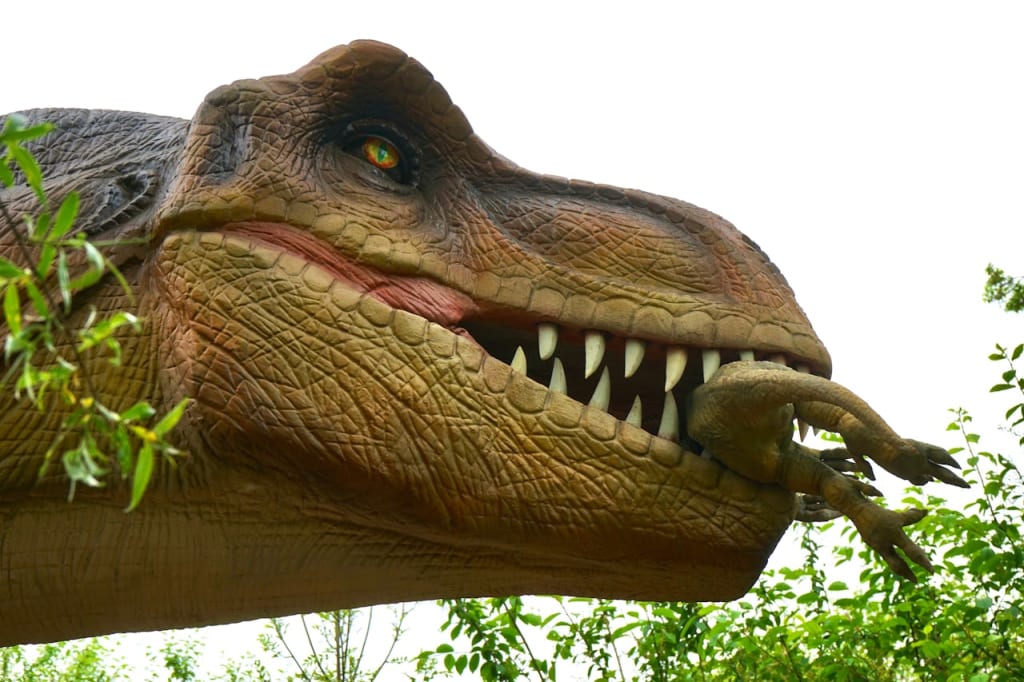
The Cretaceous Period, spanning from approximately 145 to 66 million years ago, was the last period of the Mesozoic Era and a crucial time in Earth's history. It witnessed significant geological, climatic, and biological transformations, including the diversification and dominance of dinosaurs, the emergence of flowering plants, and the fragmentation of the supercontinent Pangaea. Let's explore this fascinating period in Earth's history.
Geological Overview:
The Cretaceous Period is characterized by extensive geological changes, including the breakup of the supercontinent Pangaea. This fragmentation led to the formation of new continents and ocean basins through the process of continental drift. The Atlantic Ocean began to widen as North and South America separated from Europe and Africa, while the Indian subcontinent drifted northward towards Asia.
During the early Cretaceous, the climate was generally warm and humid, with high sea levels and widespread shallow seas covering many continental interiors. As the period progressed, however, the climate gradually cooled, leading to the formation of polar ice caps towards the end of the period.
Flora:
The Cretaceous Period saw a remarkable proliferation of plant life, including the emergence and rapid spread of flowering plants (angiosperms). These plants quickly diversified and adapted to various environments, from tropical rainforests to arid plains. Some of the dominant plant groups during this time included magnolias, palms, and conifers.
One of the most significant developments in Cretaceous plant evolution was the evolution of co-evolutionary relationships with pollinators, such as insects and later, birds. This facilitated the spread and diversification of flowering plants, ultimately leading to the establishment of modern ecosystems.
Fauna:
The Cretaceous Period is often referred to as the "Age of Dinosaurs" due to the dominance and diversification of these iconic reptiles. Dinosaurs roamed the land, dominated the skies, and prowled the seas during this time. Some of the most famous dinosaurs, such as Tyrannosaurus rex, Triceratops, and Velociraptor, lived during the late Cretaceous.
In addition to dinosaurs, the Cretaceous Period was home to a diverse array of other reptiles, including marine reptiles like plesiosaurs and mosasaurs, as well as flying reptiles known as pterosaurs. These creatures occupied various ecological niches and played essential roles in Cretaceous ecosystems.
Marine life flourished in the Cretaceous oceans, with the emergence of diverse and often bizarre forms of marine reptiles and invertebrates. Ammonites were abundant and diverse, occupying a range of habitats from shallow seas to deep oceanic waters. Ichthyosaurs, long-extinct marine reptiles, were still present but in decline during this period.
Extinction Events:
The end of the Cretaceous Period is marked by one of the most significant extinction events in Earth's history, known as the Cretaceous-Paleogene (K-Pg) extinction event. This event, which occurred approximately 66 million years ago, resulted in the extinction of around 75% of all plant and animal species, including the non-avian dinosaurs.
The exact cause of the K-Pg extinction event is still a subject of debate among scientists. However, the leading hypothesis proposes that a combination of factors, including massive volcanic eruptions, asteroid impacts, and climate change, contributed to the demise of the dinosaurs and many other organisms. The impact hypothesis gained significant support following the discovery of the Chicxulub crater off the coast of Mexico's Yucatán Peninsula, which is believed to be the result of a large asteroid or comet impact.
Legacy and Impact:
The Cretaceous Period laid the groundwork for the modern world in many ways. The extinction of the dinosaurs paved the way for the rise of mammals, ultimately leading to the emergence of humans millions of years later. Furthermore, the diversification of flowering plants during this time laid the foundation for modern terrestrial ecosystems.
The geological and climatic changes that occurred during the Cretaceous Period also set the stage for future evolutionary events, shaping the course of life on Earth for millions of years to come. Studying this period provides valuable insights into the processes driving evolution, extinction, and the dynamics of Earth's ancient ecosystems.
In conclusion, the Cretaceous Period was a pivotal time in Earth's history, characterized by dramatic geological, climatic, and biological changes. From the dominance of dinosaurs to the emergence of flowering plants, this period shaped the trajectory of life on our planet and left a lasting legacy that continues to influence the world today.
About the Creator
Ekombe hau
Fictional stories writing and types of good narrative, histories science etc.
content creator in vocal media
lover of music
musical instrument Drummer
Master of psychology and counselling
Enjoyed the story? Support the Creator.
Subscribe for free to receive all their stories in your feed. You could also pledge your support or give them a one-off tip, letting them know you appreciate their work.






Comments
There are no comments for this story
Be the first to respond and start the conversation.